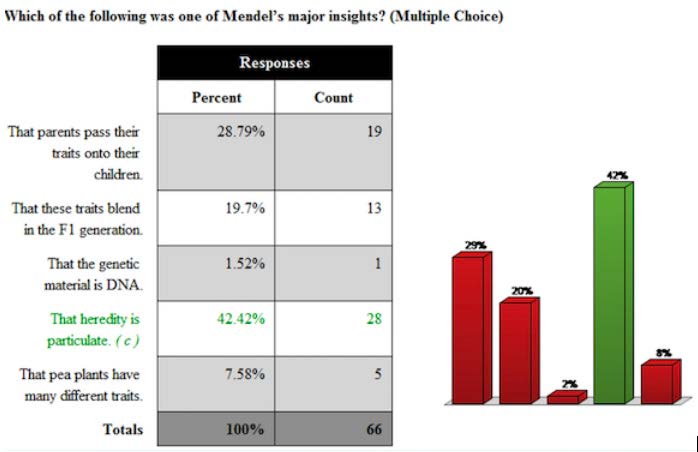VICTOR SCHMITT-BUSH
Special to The Leader
Succeeding as a college student isn’t easy, but teaching and preparing the material in a way that not only engages students, but results in a can-do attitude can be an equally daunting task.
According to professor Scott B. Ferguson, in his public lecture, “The Course as Research,” a more comprehensive approach to teaching begins with reforming the way students interact with technologies in the classroom.
On Sept. 7 Ferguson made a special appearance at Fredonia’s Science Center, where he made his proposal.
According to Ferguson, the implementation of clickers is not just some gimmick, it is the first step to his “tri-step” process.
He believes that professors, new and seasoned alike, could utilize clickers to help reform their own teaching methods.
He explained during his lecture that using clickers “helps the students to recognize gaps in their knowledge. It’s one thing to sit and nod along.”
“The professor might think the students understand the material, but when they go to apply it, sometimes there are some gaps that are opened up,” said Ferguson. “The clickers help students and professors to recognize where those issues lie, and then to help close those gaps.”
In both his lectures and in his labs, Ferguson’s students are encouraged to work together to solve problems using the Think, Pair, Share method (TPS).
This method requires students to think individually about a question posed in class. They must then pair with other students to discuss how they got their results. After collaborating with a small group of peers, the students are expected to share their findings with the rest of the class.
Ferguson assured that the clickers enhance this technique by allowing students to digitally convey their answers to the system. The professor can then keep track of the students’ progress and pay much closer attention to who is and who isn’t grasping the material.
According to junior biochemistry major Alain Moffett, “there are questions on his slides, and some slides have a poll on it. The poll acts like a question, and we vote on the answer. If we get it wrong, it shows on a bar graph, so it’s a lot easier for us to see if the class as a whole is on the right track or not.”

To maximize student proficiency, Ferguson insists that their attention must be captured preemptively. As part of his second step to student success, he produces digital lectures for students outside of class. This makes it easier for his students to shift their focus toward a more interactive and engaged side of class discussion.
“I call it the ‘flip-class’ mentality. If you can provide lessons that students can watch outside of class, it helps them to brush up on the material beforehand. This is also essential if students want to be actively engaged and get right answers when using their clickers.”
He elaborated, “I know that one of the barriers to using clickers is not being able to get through all of the material. Watching digital lectures before and even after class takes that pressure away.”
For junior biology major Lily Dixon, “Dr. Ferguson’s approach is great because he posts all of his lectures online. That allows us to go back and reinforce the material we learned during a typical class lecture.”
As his students grow to be more actively engaged, his third and final experiment entitled “I don’t know how the story ends,” is effectively brought into play.
“In almost all of our labs, we actually do real undiscovered research,” says senior molecular genetics major Mam Deng.
Ferguson says that his lab work is his teaching philosophy. He doesn’t know what is going to happen to the experiments in his students’ lab work because he chooses to challenge his students with research ideas that neither he nor anyone else have sought to discover beforehand.
“Sometimes it doesn’t work out,” said Ferguson. “Sometimes things go pretty bad. But at the end of the day, students are always taking away meaningful lessons from the lab whether it be because of their accomplishments or failures.”
According to Ferguson, what separates his students from many others is that they are getting actual, real life lab experience. They are witnessing what it is like to truly discover new things. At the same time, they are witnessing what it is like to see all that hard work result in failed experiments. Ultimately, nothing is ever preconditioned one way or the other.
Even so, the effect that Ferguson has had on the proficiency of his students has been striking. The chart below demonstrates the effect the incorporation of clickers via his 3-step process has had on students from the year 2009 in comparison to 2010.
It’s as simple as follows. In the year of 2009, when Dr. Ferguson first taught at Fredonia, his tri-step process was only in development. In 2010, when his process really began to set in motion, the difference in student performance in his classes as represented by this graph was clear as day.
The arrow marking the 10 percent accounts for the increase in the median grade of students, which rose from 70 percent to 80 percent from 2009 to 2010.
